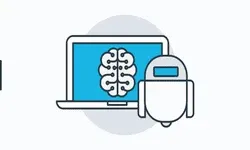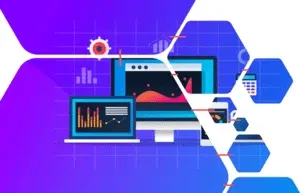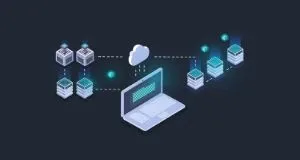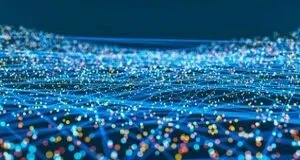This plan includes
- Limited free courses access
- Play & Pause Course Videos
- Video Recorded Lectures
- Learn on Mobile/PC/Tablet
- Quizzes and Real Projects
- Lifetime Course Certificate
- Email & Chat Support
What you'll learn?
- Computer Vison and Image Recognition Specific Deep Learning and Convolutional Neural Networks using Python for Beginners
Course Overview
Pre-requisites
- A medium configuration computer and the willingness to indulge in the world of Deep Learning
Target Audience
- Beginners who are interested in becoming experts in Deep Learning and Computer Vision using Python
Curriculum 105 Lectures 13:35:46
Section 1 : Course Introduction and Table of Contents
Section 2 : Introduction to Deep Learning
- Lecture 1 :
- Introduction to Deep Learning
Section 3 : Introduction to Neural Networks
- Lecture 1 :
- Introduction to Neural Networks
Section 4 : Image Basics
- Lecture 1 :
- Image Basics - Part 1
- Lecture 2 :
- Image Basics - Part 2
Section 5 : Preparing your computer - Installing Anaconda
- Lecture 1 :
- Preparing your computer - Installing Anaconda
Section 6 : Preparing your computer - Installing Dependencies
- Lecture 1 :
- Preparing your computer - Installing Dependencies
Section 7 : Python Basics
- Lecture 1 :
- Python Basics - Assignment
- Lecture 2 :
- Python Basics - Flow Control
- Lecture 3 :
- Python Basics - Functions
- Lecture 4 :
- Python Basics - Data Structures
Section 8 : Load and Show Image
- Lecture 1 :
- Load and Show Image
Section 9 : Image Classification Basics
- Lecture 1 :
- Image Classification Basics - Part 1
- Lecture 2 :
- Image Classification Basics - Part 2
Section 10 : List of Popular Datasets Included
- Lecture 1 :
- List of Popular Datasets Included
Section 11 : KNN Image Classifier - Downloading Animals Dataset
- Lecture 1 :
- KNN Image Classifier - Downloading Animals Dataset
Section 12 : Creating Common Pre-processor
- Lecture 1 :
- Creating Common Pre-processor
Section 13 : Creating Common Loader
- Lecture 1 :
- Creating Common Loader - Part 1
- Lecture 2 :
- Creating Common Loader - Part 2
Section 14 : KNN Basics
- Lecture 1 :
- KNN Basics - Part 1
- Lecture 2 :
- KNN Basics - Part 2
Section 15 : KNN Implementation - Load and Process
- Lecture 1 :
- KNN Implementation - Load and Process - Part 1
- Lecture 2 :
- KNN Implementation - Load and Process - Part 2
- Lecture 3 :
- KNN Implementation - Load and Process - Part 3
Section 16 : KNN Implementation - Splitting the Dataset
- Lecture 1 :
- KNN Implementation - Splitting the Dataset
Section 17 : KNN Implementation - Training and Evaluation
- Lecture 1 :
- KNN Implementation - Training and Evaluation - Part 1
- Lecture 2 :
- KNN Implementation - Training and Evaluation - Part 2
Section 18 : KNN Prediction
- Lecture 1 :
- KNN Prediction - Part 1
- Lecture 2 :
- KNN Prediction - Part 2
Section 19 : Introduction to Linear Classification
- Lecture 1 :
- Introduction to Linear Classification - Part 1
- Lecture 2 :
- Introduction to Linear Classification - Part 2
Section 20 : Scoring Function Basics
- Lecture 1 :
- Scoring Function Basics - Part 1
- Lecture 2 :
- Scoring Function Basics - Part 2
Section 21 : Scoring Function - Implementation
- Lecture 1 :
- Scoring Function - Implementation - Part 1
- Lecture 2 :
- Scoring Function - Implementation - Part 2
Section 22 : Loss Function Basics
- Lecture 1 :
- Loss Function Basics
Section 23 : Optimization Concept Terminology and Challenges
- Lecture 1 :
- Optimization Concept Terminology and Challenges - Part 1
- Lecture 2 :
- Optimization Concept Terminology and Challenges - Part 2
Section 24 : Gradient Descent Implementation
- Lecture 1 :
- Gradient Descent Implementation - Part 1
- Lecture 2 :
- Gradient Descent Implementation - Part 2
- Lecture 3 :
- Gradient Descent Implementation - Part 3
- Lecture 4 :
- Gradient Descent Implementation - Part 4
- Lecture 5 :
- Gradient Descent Implementation - Part 5
Section 25 : Stochastic Gradient Descent Implementation
- Lecture 1 :
- Stochastic Gradient Descent Implementation - Part 1
- Lecture 2 :
- Stochastic Gradient Descent Implementation - Part 2
Section 26 : Introduction to Regularization
- Lecture 1 :
- Introduction to Regularization
Section 27 : Implementing Regularization
- Lecture 1 :
- Implementing Regularization
Section 28 : Introduction to Perceptrons
- Lecture 1 :
- Introduction to Perceptrons - Part 1
- Lecture 2 :
- Introduction to Perceptrons - Part 2
Section 29 : Perceptron Implementation: Creating Class
- Lecture 1 :
- Perceptron Implementation: Creating Class - Part 1
- Lecture 2 :
- Perceptron Implementation: Creating Class - Part 2
- Lecture 3 :
- Perceptron Implementation: Creating Class - Part 3
Section 30 : Perceptron Implementation: Creating BitWise Evaluation Program
- Lecture 1 :
- Perceptron Implementation: Creating BitWise Evaluation Program - Part 1
- Lecture 2 :
- Perceptron Implementation: Creating BitWise Evaluation Program - Part 2
Section 31 : Introduction to Back Propagation
- Lecture 1 :
- Introduction to Back Propagation - Part 1
- Lecture 2 :
- Introduction to Back Propagation - Part 2
Section 32 : Back Propagation Implementation - Creating Class
- Lecture 1 :
- Back Propagation Implementation - Creating Class - Part 1
- Lecture 2 :
- Back Propagation Implementation - Creating Class - Part 2
- Lecture 3 :
- Back Propagation Implementation - Creating Class - Part 3
- Lecture 4 :
- Back Propagation Implementation - Creating Class - Part 4
- Lecture 5 :
- Back Propagation Implementation - Creating Class - Part 5
- Lecture 6 :
- Back Propagation Implementation - Creating Class - Part 6
- Lecture 7 :
- Back Propagation Implementation - Creating Class - Part 7
Section 33 : Back Propagation - Create XOR Evaluation Program
- Lecture 1 :
- Back Propagation - Create XOR Evaluation Program - Part 1
- Lecture 2 :
- Back Propagation - Create XOR Evaluation Program - Part 2
Section 34 : Back Propagation - Create MNIST Evaluation Program
- Lecture 1 :
- Back Propagation - Create MNIST Evaluation Program - Part 1
- Lecture 2 :
- Back Propagation - Create MNIST Evaluation Program - Part 2
- Lecture 3 :
- Back Propagation - Create MNIST Evaluation Program - Part 3
Section 35 : Keras Based MNIST Evaluation Program
- Lecture 1 :
- Keras Based MNIST Evaluation Program - Part 1
- Lecture 2 :
- Keras Based MNIST Evaluation Program - Part 2
- Lecture 3 :
- Keras Based MNIST Evaluation Program - Part 3
- Lecture 4 :
- Keras Based MNIST Evaluation Program - Part 4
Section 36 : Introduction to Convolutional Neural Networks
- Lecture 1 :
- Introduction to Convolutional Neural Networks
Section 37 : Custom Convolution using Python
- Lecture 1 :
- Custom Convolution using Python - Part 1
- Lecture 2 :
- Custom Convolution using Python - Part 2
- Lecture 3 :
- Custom Convolution using Python - Part 3
- Lecture 4 :
- Custom Convolution using Python - Part 4
Section 38 : CNN Design Best Practices and ShallowNet Introduction
- Lecture 1 :
- CNN Design Best Practices and ShallowNet Introduction
Section 39 : Create ShallowNet Class
- Lecture 1 :
- Create ShallowNet Class - Part 1
- Lecture 2 :
- Create ShallowNet Class - Part 2
Section 40 : ShallowNet using Animals Dataset
- Lecture 1 :
- ShallowNet using Animals Dataset - Part 1
- Lecture 2 :
- ShallowNet using Animals Dataset - Part 2
Section 41 : ShallowNet using CIFAR10 Dataset
- Lecture 1 :
- ShallowNet using CIFAR10 Dataset
Section 42 : ShallowNet CIFAR10 Save and Load Model
- Lecture 1 :
- ShallowNet CIFAR10 Save and Load Model
Section 43 : ShallowNet CIFAR10 Predict
- Lecture 1 :
- ShallowNet CIFAR10 Predict
Section 44 : ShallowNet Animals Save, Load and Predict
- Lecture 1 :
- ShallowNet Animals Save, Load and Predict
Section 45 : LeNet Overview
- Lecture 1 :
- LeNet Overview
Section 46 : Create LeNet Class
- Lecture 1 :
- Create LeNet Class
Section 47 : Lenet MNIST Train and Save
- Lecture 1 :
- Lenet MNIST Train and Save
Section 48 : Lenet MNIST Prediction
- Lecture 1 :
- Lenet MNIST Prediction
Section 49 : Introduction to VGGNet Architecture
- Lecture 1 :
- Introduction to VGGNet Architecture
Section 50 : Creating VGGNet Class
- Lecture 1 :
- Creating VGGNet Class
Section 51 : VGGNet CIFAR 10 Model Save
- Lecture 1 :
- VGGNet CIFAR 10 Model Save
Section 52 : VGGNet CIFAR 10 Predict
- Lecture 1 :
- VGGNet CIFAR 10 Predict
Section 53 : Learning Rate Scheduler
- Lecture 1 :
- Learning Rate Scheduler - Part 1
- Lecture 2 :
- Learning Rate Scheduler - Part 2
Section 54 : Improvement Checkpoint
- Lecture 1 :
- Improvement Checkpoint - Part 1
- Lecture 2 :
- Improvement Checkpoint - Part 2
Section 55 : Pretrained VGGNet 16
- Lecture 1 :
- Pretrained VGGNet 16 - Part 1
- Lecture 2 :
- Pretrained VGGNet 16 - Part 2
Section 56 : Pretrained VGGNet 19
- Lecture 1 :
- Pretrained VGGNet 19
Section 57 : Pretrained ResNet
- Lecture 1 :
- Pretrained ResNet
Section 58 : Pretrained Inception
- Lecture 1 :
- Pretrained Inception
Section 59 : Pretrained Xception
- Lecture 1 :
- Pretrained Xception
Section 60 : SOURCE CODE AND FILES ATTACHED
- Lecture 1 :
- Source Code Download Link Attached
Our learners work at
Frequently Asked Questions
How do i access the course after purchase?
It's simple. When you sign up, you'll immediately have unlimited viewing of thousands of expert courses, paths to guide your learning, tools to measure your skills and hands-on resources like exercise files. There’s no limit on what you can learn and you can cancel at any time.Are these video based online self-learning courses?
Yes. All of the courses comes with online video based lectures created by certified instructors. Instructors have crafted these courses with a blend of high quality interactive videos, lectures, quizzes & real world projects to give you an indepth knowledge about the topic.Can i play & pause the course as per my convenience?
Yes absolutely & thats one of the advantage of self-paced courses. You can anytime pause or resume the course & come back & forth from one lecture to another lecture, play the videos mulitple times & so on.How do i contact the instructor for any doubts or questions?
Most of these courses have general questions & answers already covered within the course lectures. However, if you need any further help from the instructor, you can use the inbuilt Chat with Instructor option to send a message to an instructor & they will reply you within 24 hours. You can ask as many questions as you want.Do i need a pc to access the course or can i do it on mobile & tablet as well?
Brilliant question? Isn't it? You can access the courses on any device like PC, Mobile, Tablet & even on a smart tv. For mobile & a tablet you can download the Learnfly android or an iOS app. If mobile app is not available in your country, you can access the course directly by visting our website, its fully mobile friendly.Do i get any certificate for the courses?
Yes. Once you complete any course on our platform along with provided assessments by the instructor, you will be eligble to get certificate of course completion.
For how long can i access my course on the platform?
You require an active subscription to access courses on our platform. If your subscription is active, you can access any course on our platform with no restrictions.Is there any free trial?
Currently, we do not offer any free trial.Can i cancel anytime?
Yes, you can cancel your subscription at any time. Your subscription will auto-renew until you cancel, but why would you want to?
Instructor

286604 Course Views
19 Courses



 Tech & IT
Tech & IT
 Business
Business
 Coding & Developer
Coding & Developer
 Finance & Accounting
Finance & Accounting
 Academics
Academics
 Office Applications
Office Applications
 Art & Design
Art & Design
 Marketing
Marketing
 Health & Wellness
Health & Wellness
 Sounds & Music
Sounds & Music
 Lifestyle
Lifestyle
 Photography
Photography


























